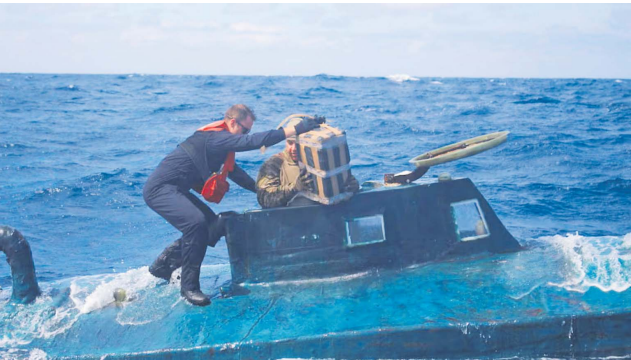It’s not every day a fisherman stumbles across a submarine, especially in the Solomon Islands.
But that’s exactly what happened recently off the coast of Isabel Province, when a local fisherman discovered what authorities now suspect is a narco submarine, a semi-submersible drug trafficking vessel likely used by international cartels.
The discovery has rattled the region, and, believe me, we should all be concerned because this isn’t just some headline from far away anymore, it’s here, on our doorstep.
The vessel found was no ordinary boat. At about 40 feet long, the semi-submersible had a sleek fibreglass hull, multiple powerful outboard engines, and a sealed hatch — features commonly associated with drug smuggling operations originating from Latin America.
While no drugs were found onboard, Australian authorities didn’t hesitate to call this “the first concrete evidence” of narco submarines operating in the Pacific. For law enforcement and ordinary citizens alike, the implications are huge.
The sophisticated design suggests that this was no amateur job, it was likely constructed and operated by a well-funded drug cartel, capable of moving multi-million-dollar shipments across oceans with little risk of detection.
Narco submarines, or more accurately, self-propelled semi-submersibles (SPSS), are the drug cartels’ secret weapon. Built to cruise just below the waterline, they’re notoriously difficult to spot using radar or satellite imaging. These aren’t submarines in the military sense, they don’t fully submerge, but they stay low enough to avoid most surveillance.
Most are constructed in hidden jungle shipyards in Colombia or Ecuador, often by skilled labourers under cartel control. Crews of two to four people will pilot them for days or even weeks at a time, often with limited air supply, basic GPS, and rudimentary steering systems. Many are built for single use — designed to sink after their cargo is offloaded, eliminating evidence.
In 2019, the US Coast Guard intercepted a narco sub off the coast of Mexico carrying over 7.7 tonnes of cocaine, worth more than $230million. That’s just one vessel. Some are capable of carrying even more.
And now, we appear to have evidence that such vessels are operating in the Pacific Islands, making the task of authorities even more difficult.
Drug cartels are not just gangs; they’re multinational criminal enterprises. The biggest players, like the Sinaloa Cartel and the Jalisco New Generation Cartel (CJNG), operate like corporations. They have armed enforcers, accountants, bribery networks, and highly advanced smuggling strategies.
Narco subs are just one tool in their arsenal. Others include drones, tunnels, container ships, and even legitimate business fronts.
Their reach now spans continents, and it seems they’ve turned their gaze toward the Pacific.
Australian Federal Police and border security officials say they are deeply concerned that cartels are using Pacific Island nations as transit points — small, scattered, often under-resourced nations with huge Exclusive Economic Zones (EEZs) and limited maritime surveillance capability.
One senior Australian law enforcement officer put it bluntly: “If they’re sending narco subs to the Pacific, they’re already treating it like a logistics hub.”
Australia has committed to working with Pacific neighbours to boost maritime security and drug detection capabilities, but the scale of the challenge is daunting.
Let me be honest. I love my country. I love our culture, our people, and our way of life. And that’s exactly why I’m worried.
We’ve seen the rising influence of drugs in Fiji. Methamphetamine seizures are becoming more frequent. Cocaine parcels are washing up on our beaches. And now, the possibility that submarines could be cruising through Pacific waters undetected? That’s a frightening escalation.
Fiji’s geography makes us vulnerable. We sit at the crossroads of several shipping lanes. Our borders are wide and hard to monitor. If even one narco sub successfully unloads here, the ripple effects could be devastating: more drugs on our streets, more youth pulled into addiction, and more crime in our communities.
We can’t afford to be naive. The presence of a narco sub in the Pacific should be a wake-up call for all of us — governments, police, communities, and individuals.
This isn’t just about stopping boats. It’s about protecting our children, our culture, and our sovereignty.
Fiji needs to step up and invest more in maritime patrols, surveillance technology, international cooperation, and community education. We must also support those already fighting the good fight, including our police, customs officers, and regional partners.
Until next week, take care and be safe!



